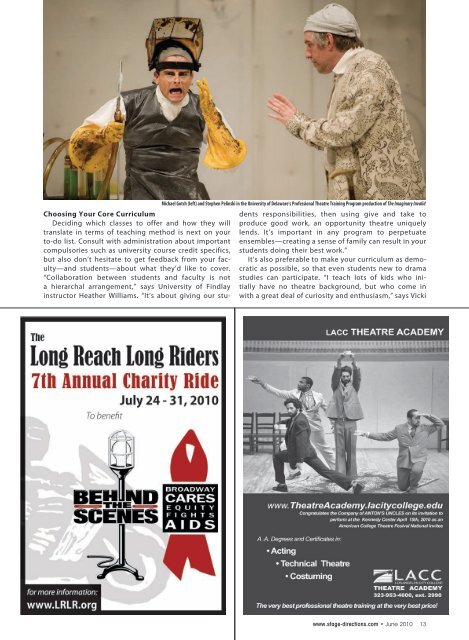Download a PDF - Stage Directions Magazine
Download a PDF - Stage Directions Magazine
Download a PDF - Stage Directions Magazine
You also want an ePaper? Increase the reach of your titles
YUMPU automatically turns print PDFs into web optimized ePapers that Google loves.
Michael Gotch (left) and Stephen Pelinski in the University of Delaware’s Professional Theatre Training Program production of The Imaginary Invalid<br />
Choosing Your Core Curriculum<br />
Deciding which classes to offer and how they will<br />
translate in terms of teaching method is next on your<br />
to-do list. Consult with administration about important<br />
compulsories such as university course credit specifics,<br />
but also don’t hesitate to get feedback from your faculty—and<br />
students—about what they’d like to cover.<br />
“Collaboration between students and faculty is not<br />
a hierarchal arrangement,” says University of Findlay<br />
instructor Heather Williams. “It’s about giving our students<br />
responsibilities, then using give and take to<br />
produce good work, an opportunity theatre uniquely<br />
lends. It’s important in any program to perpetuate<br />
ensembles—creating a sense of family can result in your<br />
students doing their best work.”<br />
It’s also preferable to make your curriculum as democratic<br />
as possible, so that even students new to drama<br />
studies can participate. “I teach lots of kids who initially<br />
have no theatre background, but who come in<br />
with a great deal of curiosity and enthusiasm,” says Vicki<br />
www.stage-directions.com • June 2010 13

















